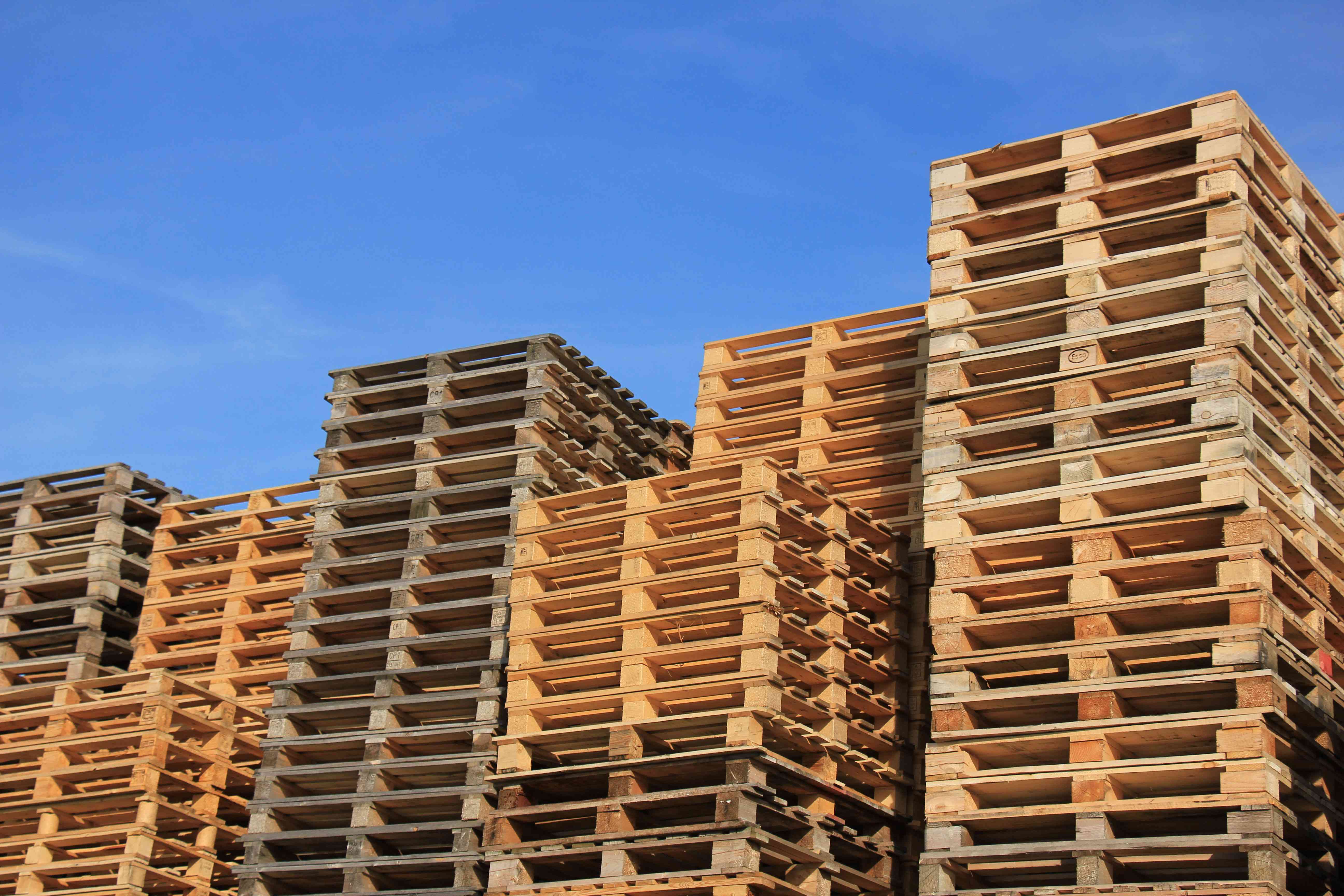Wood Pallets For Sale Near Me
Shop All Wood Pallets

The Role of Wood Pallets in Modern Logistics
Wood pallets play a vital role in keeping supply chains moving, offering a reliable solution for transporting and storing goods across nearly every industry. Their durability and adaptability make them a go-to choice for businesses looking to move products efficiently, whether across the warehouse or around the world. From new builds to recycled options, wood pallets support both performance and sustainability, helping companies balance practicality with environmental responsibility.
Choosing Between New and Used Wood Pallets
New wood pallets, made from hardwood or softwood, offer reliable quality and meet industry standards—ideal for food, pharma, and export use. With various types and entry options, they’re durable, customizable, and built for efficient logistics.
Used pallets are a budget-friendly, eco-conscious option suited for storage, transport, and distribution. Though less customizable, they’re widely available and sustainable, making them a practical choice for many operations.

Used Pallet Grades
Used wood pallets are graded based on their condition, structural integrity, and appearance. The grading process helps classify pallets into categories that reflect their level of wear, number of repairs, and overall usability.
These pallets have a like-new appearance, are structurally sound, and have no plugs or companion runners.
With a lower price point due to visible repairs, this option offers an economical alternative to new and A grade pallets.
Another economical choice, remanufactured pallets are built using a mix of new and reclaimed lumber.
Pallets that have been used for a single shipment or transport and remain in near-new condition with minimal wear.
Pallets that have been used multiple times often show signs of wear or repairs for continued use in supply chain operations.
Scrap pallets are in poor condition and are often unsafe for use due to severe damage or structural instability.
Common Sizes and Specifications
The International Organization for Standardization (ISO) sets standards for pallet sizes to help businesses reduce waste, minimize errors, and boost productivity. Wood pallets come in a variety of standard sizes, such as 48"x40", 42”x42” and 48”x48”, that serve specific industries like retail, automotive, and chemical transport. Choosing the right pallet size ensures efficient handling, maximizes storage space, and improves supply chain operations.
| Size | Top Deck # | Maximum Load | Pallet Weight |
|---|---|---|---|
| 48 x 48" | 6 | 4673 lbs. | 37 lbs. |
| 48 x 42" | 7 | 4333 lbs. | 35 lbs. |
| 48 x 40" | 7 | 4592 lbs. | 37 lbs. |
| 48 x 36" | 6 | 5261 lbs. | 31 lbs. |
| Size | Top Deck # | Maximum Load | Pallet Weight |
|---|---|---|---|
| 42 x 42" | 7 | 4445 lbs. | 36 lbs. |
| 40 x 48" | 7 | 3696 lbs. | 42 lbs. |
| 40 x 40" | 6 | 3544 lbs. | 29 lbs. |
| 36 x 36" | 6 | 3544 lbs. | 32 lbs. |
2-Way vs. 4-Way Entry Pallets
When selecting wood pallets, consider whether 2-way or 4-way entry better fits your operation. 2-way pallets offer sturdy support and are accessible from two sides—ideal for heavy loads and static storage. 4-way pallets allow forklift access from all sides, boosting efficiency in fast-paced, space-limited environments.
Block, Stringer, and Beyond: Types of Wood Pallets
Wood pallets come in a variety of types that each offer their own benefits and features. In addition to the two main categories, stringer and block pallets, there are other options that help support the needs of various industries.
Block: Built with blocks as spacers, allowing for four-way forklift entry; known for strength and durability.
Stringer: Uses parallel boards (stringers) for support, offering two- or four-way forklift entry depending on design.
GMA: A standard pallet size established by the Grocery Manufacturers Association (GMA).
Skid: A single-deck pallet without a bottom deck, often used for lighter loads or temporary storage.
Single-Winged: Features top deck boards that extend beyond the stringers or blocks for added surface area.
Double-Winged: Has top and bottom deck boards extending beyond the stringers or blocks on both sides for extra stability.
Solid Deck: Designed with a smooth, continuous top surface, offering support and protection for smaller or fragile items.
Close-Boarded: Made with deck boards placed close together, ideal for carrying smaller or irregularly shaped loads.

